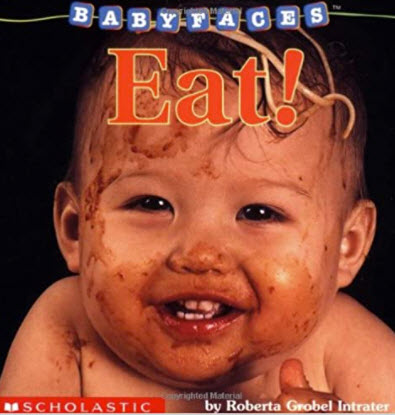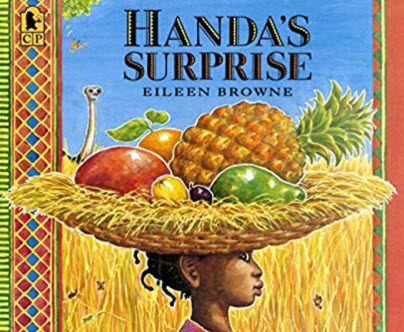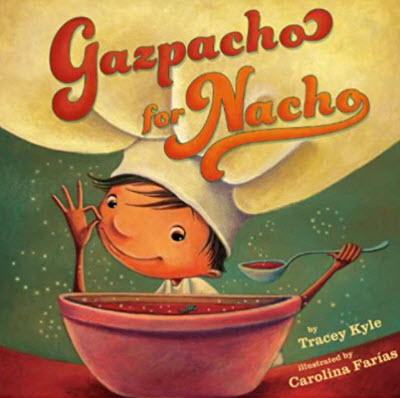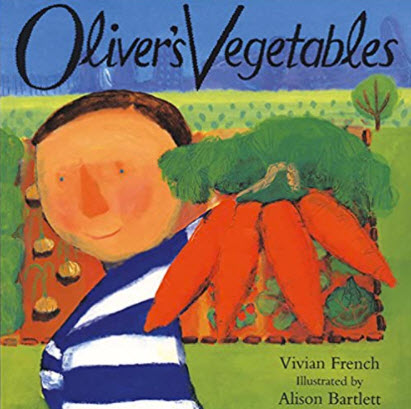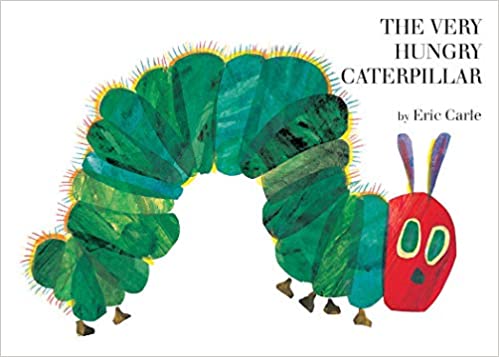Tuesday, April 13th
Theme: Food
Eat! (Baby Faces Board Book)
By Roberta Grobel Intrater
These strikingly candid photos of multicultural babies eating coupled with the simple, rhyming text will keep little ones spellbound.
Let infants look at Eat! before their meal. Read to infants as they feed themselves and hold up a mirror so they can see their faces. Self-feeding allows infants to experience different textures and temperatures, develop hand and finger coordination, and build self-confidence!
Handa’s Surprise
By Eileen Browne
When Handa carries seven delicious fruits in a basket on her head to surprise her friend Akeyo, she meets some hungry animals along the way and gets an unexpected surprise of her own.
Collect the fruits named in the story and allow children to hold, feel, and look at each. Crumple up colored paper to represent the fruits and allow children to put them into a basket and try to carry them like Handa! Invite your toddlers to help set up a taste test of the fruits from the story.
Gazpacho for Nacho
By Tracey Kyle
Don’t miss this rhyming book which includes Spanish vocabulary words about a fussy boy who will only eat gazpacho. After going to the market and cooking gazpacho with his mother, Nacho is inspired to create other dishes.
Check for any allergies and choose two foods from the list of foods Nacho refuses. If possible, have children help prepare and cook the foods. Place small tastes of each food in cupcake papers and put gazpacho in a small cup so each child can do a taste test for snack! Draw a chart with three columns on a large piece of paper and print the name of each food at the top of each column. After children taste each food, ask them to draw a happy or sad face to record their preferences. Look over the results and discuss how the chart shows us what the children liked best or least.
Oliver’s Vegetables
By Vivian French
This is the story of a boy who will only eat French fries until a special trip to his grandparents’ house. Use this book as a developmentally appropriate way to encourage children to try new vegetables and to talk to young children about where our food comes from.
Check for any allergies and ask families to bring in a vegetable from the list of those found in Grandpa’s garden. Let children share, pass around, and talk about each vegetable and encourage them to compare the similarities and differences! Then ask children to help wash and cut up each vegetable using child-safe utensils. Serve up the vegetables for children to taste and compare during snack.
The Very Hungry Caterpillar
By Eric Carle
Share the classic tale of a very hungry caterpillar that eats its way through the days of the week. Enjoy counting and watching what happens once the caterpillar is no longer hungry!
Invite preschoolers and toddlers to use playdough and tools to form the different foods the caterpillar eats to help them develop their fine motor skills. Discuss which foods are healthy and which are not. Make a story basket for infants and fill it with giant colored pom-poms, that are safe for children under three, to represent the foods the caterpillar eats.


 The Source for Learning is proud to participate in NAEYC’s Week of the Young Child, celebrating 50 years of early learning with children, families, and educators!
The Source for Learning is proud to participate in NAEYC’s Week of the Young Child, celebrating 50 years of early learning with children, families, and educators! 
